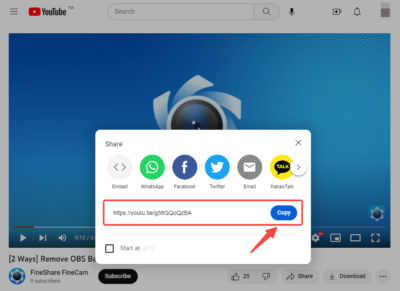Introduction
Welcome to our tutorial on how to remove Adobe Stock watermarks using Adobe Photoshop. If you've ever used Adobe Stock images, you know that the watermarks can be a bit distracting. Whether you're a designer, marketer, or content creator, it's essential to understand how to use these images legally and efficiently.
In this guide, we'll walk you through the process of removing watermarks from Adobe Stock images. We'll also discuss the legal aspects of using watermarked images and provide alternative solutions. By the end of this tutorial, you'll be equipped with the knowledge and skills to make the most of your Adobe Stock assets.
Also Read This: How to Shoot and Edit High-Quality Product Photos
Understanding Adobe Stock Watermarks
![Photoshop Tutorial ] How to Remove WATERMARK in Photoshop CC 2022 - YouTube](https://hdstockimages.com/wp-content/plugins/BlogPostBaba/images/2023/10/12/652784bf05b01.jpg)
Adobe Stock watermarks are a visual protection mechanism employed by Adobe to safeguard copyrighted images available on their platform. These watermarks are superimposed over the images and serve several crucial purposes:
- Deter Unauthorized Use: The prominent "Adobe Stock" watermark discourages unauthorized use and downloading of images without proper licensing. It acts as a visual reminder of the image's copyright status.
- Preview Images: Watermarked images are typically lower-resolution and less detailed than their full, licensed counterparts. This enables users to preview and assess the image's suitability for their project before making a purchase.
- Legal Protection: The presence of a watermark underscores the legal rights and restrictions associated with Adobe Stock images. It emphasizes the need to respect licensing agreements and copyright laws.
It's important to note that Adobe Stock watermarks serve as both a protection measure for content creators and a means for potential buyers to evaluate the image's suitability. However, they are not intended for use in finished projects or publications. Using watermarked images in such contexts can lead to legal consequences for copyright infringement.
In the table below, we summarize key attributes of Adobe Stock watermarks:
| Attribute | Description |
|---|---|
| Visibility | Highly visible with the "Adobe Stock" logo and copyright notice. |
| Resolution | Lower resolution and quality compared to licensed images. |
| Purpose | To discourage unauthorized use, provide previews, and protect copyrights. |
While Adobe Stock watermarks are essential for their intended purposes, there are legitimate scenarios where you might need watermark-free, high-quality versions of these images. In the following sections, we will delve into the legal aspects of using Adobe Stock images, provide step-by-step instructions on removing watermarks using Adobe Photoshop, and discuss alternative methods for sourcing images without watermarks.
Also Read This: Etsy Encounters: Finding Friends on Etsy in 2022
Legal Considerations
When dealing with Adobe Stock images and their watermarks, it's essential to be aware of the legal implications and responsibilities associated with their usage. Failing to adhere to these legal considerations can result in severe consequences, including potential legal action. Here are key legal aspects to keep in mind:
- Copyright Protection: Every image available on Adobe Stock is protected by copyright law. The watermark, in this case, serves as a visual indicator of this protection. It's important to understand that copyright holders have exclusive rights to their work, and using their images without permission or proper licensing can constitute copyright infringement.
- License Agreements: When you purchase a license for an Adobe Stock image, you are essentially buying the right to use the image in specific ways. The license agreement outlines how, where, and for what purposes you can use the image. Using a watermarked image outside the terms of the license can lead to legal consequences.
- Unauthorized Use: Attempting to remove watermarks from Adobe Stock images without the appropriate license is considered unauthorized use. This is a breach of the terms and conditions set by Adobe, and it may result in legal action or the suspension of your Adobe Stock account.
It's crucial to respect copyright and licensing agreements when working with Adobe Stock images. If you require high-resolution, watermark-free versions for your project, the proper course of action is to purchase the necessary license.
Additionally, some users might wonder about the consequences of using watermarked Adobe Stock images in their work. The following table provides a brief overview of the potential consequences:
| Consequence | Description |
|---|---|
| Copyright Infringement | Using watermarked images without a license is a violation of copyright law and can result in legal action. |
| Account Suspension | Adobe may suspend your account if you are found to be using watermarked images without proper licensing. |
| Legal Penalties | You may be liable for legal penalties, including fines, in cases of copyright infringement. |
To avoid these potential legal issues, always follow the terms of your license agreement and respect the copyright protections in place. In the following sections of this tutorial, we'll provide guidance on how to properly use Adobe Stock images and explain how to remove watermarks using Adobe Photoshop for licensed images.
Also Read This: How to Sell Android Photos on Alamy: A Comprehensive Guide
Tools and Requirements
To effectively remove Adobe Stock watermarks in Photoshop, you'll need specific tools and meet certain requirements. Here's what you'll need to get started:
- Adobe Photoshop: Adobe Photoshop is the primary software tool for removing watermarks. Ensure you have it installed on your computer. Photoshop provides advanced editing features necessary for this task.
- Licensed Adobe Stock Image: To legally and ethically remove watermarks, you must have a valid license for the image you want to use. Ensure you have the licensed, high-resolution version of the image ready for editing.
- Computer: A computer or laptop with sufficient processing power and memory to handle image editing tasks in Photoshop.
- Operating System: Ensure your computer is running a compatible operating system for Adobe Photoshop. Adobe's official website provides information on supported systems for the software.
- Mouse or Graphics Tablet: A precise input device, such as a mouse or graphics tablet, will help you navigate and edit images more accurately in Photoshop.
- Basic Image Editing Skills: Familiarity with basic image editing techniques in Photoshop will be beneficial. If you're new to Photoshop, consider reviewing some beginner tutorials to get a better grasp of the software.
Before you proceed, confirm that you have access to these tools and meet the requirements. Keep in mind that the most critical requirement is having a proper license for the Adobe Stock image you intend to work with. Attempting to remove watermarks from images without a valid license is not only unethical but also illegal.
Below is a quick reference table summarizing the key tools and requirements:
| Tool/Requirement | Description |
|---|---|
| Adobe Photoshop | Image editing software for watermark removal. |
| Licensed Adobe Stock Image | A valid license for the image you wish to edit. |
| Computer | A capable computer for image editing. |
| Operating System | A compatible OS for Adobe Photoshop. |
| Mouse or Graphics Tablet | Precise input devices for image editing. |
| Basic Image Editing Skills | Familiarity with fundamental image editing techniques. |
With the necessary tools and a valid license in hand, you're well-equipped to proceed with our step-by-step tutorial on removing Adobe Stock watermarks using Adobe Photoshop.
Also Read This: Canva Creations: Making Digital Downloads for Etsy on Canva
Step-by-Step Tutorial
In this section, we'll guide you through the process of removing Adobe Stock watermarks using Adobe Photoshop. Remember, it's crucial to have a valid license for the image you wish to edit. Attempting to remove watermarks from unlicensed images is against Adobe's terms of service and may have legal consequences.
Follow these steps carefully:
- Open Adobe Photoshop: Launch Adobe Photoshop on your computer and ensure you're working with a licensed version.
- Load the Watermarked Image: Open the watermarked Adobe Stock image you intend to edit in Photoshop.
- Create a New Layer: In the Layers panel, click the "New Layer" button to create a new layer.
- Use the Clone Stamp Tool: Select the Clone Stamp Tool from the toolbar. This tool allows you to copy pixels from one part of the image to another.
- Adjust Tool Settings: In the tool options bar, set the brush size and hardness to match the area you're working on. Ensure that "Sample All Layers" is selected so you can clone from your new layer.
- Clone Over the Watermark: Carefully clone over the watermark, replacing it with nearby image content. Be patient and precise to maintain the image's integrity.
- Blend and Adjust: Adjust the opacity of the new layer to blend the cloned area seamlessly. Use the Eraser Tool to fine-tune the edges if needed.
- Save Your Edited Image: Once you're satisfied with the watermark removal, save your edited image in your desired format.
It's important to mention that watermark removal can be a complex process, and the success of the outcome depends on the specific image and your editing skills. Practice and patience are key to achieving the best results.
In case you face challenges in the watermark removal process or need further assistance, consider reaching out to Adobe's support or consulting online Photoshop forums for guidance from experienced users.
Always remember to use your edited image within the terms of the licensing agreement you have with Adobe Stock.
With these step-by-step instructions, you can confidently remove watermarks from Adobe Stock images and make the most of your licensed assets in your creative projects.
Also Read This: Engage Your Followers: How to Conduct a Poll on Instagram
Alternative Methods
While Adobe Photoshop is a powerful tool for removing watermarks from Adobe Stock images, there are alternative methods you can consider, depending on your specific needs and circumstances. Here are some alternative approaches to source images without watermarks:
- Licensed Images: The most straightforward and legally compliant method is to purchase licensed images from Adobe Stock or other reputable stock photo websites. This ensures you receive watermark-free, high-resolution images for your projects.
- Free Stock Photo Websites: Many websites offer high-quality stock images for free, without watermarks. Some popular options include Unsplash, Pexels, and Pixabay. Be sure to review and adhere to their usage terms and licensing agreements.
- Creating Your Own Content: If you have the skills and equipment, creating your own visual content is a powerful way to avoid watermarks. This can include photography, graphic design, or illustrations tailored to your specific needs.
- Image Editing Services: In cases where you have a watermarked image but cannot or do not wish to remove the watermark yourself, you can utilize professional image editing services. These services can remove watermarks for a fee and provide you with clean, watermark-free images.
Each of these methods has its advantages and limitations. Choosing the right approach depends on factors like your budget, project requirements, and the importance of licensing and copyright compliance.
To provide a quick reference, here's a table summarizing the alternative methods for sourcing watermark-free images:
| Method | Description |
|---|---|
| Licensed Images | Purchase images with proper licensing from stock photo websites. |
| Free Stock Photo Websites | Explore websites offering free, high-quality images without watermarks. |
| Creating Your Own Content | Produce custom images and graphics that meet your project needs. |
| Image Editing Services | Hire professional services to remove watermarks from existing images. |
It's important to note that using licensed images or free stock photos from reputable sources is often the most straightforward and legally secure method for obtaining watermark-free content. These sources typically provide high-quality images that meet various project requirements.
Ultimately, the choice of the method depends on your unique circumstances and preferences. Ensure that you respect copyright and licensing agreements when working with visual content to avoid legal issues.
Also Read This: User Identity Update: Changing Your eBay Username
FAQ
Here are some frequently asked questions about Adobe Stock watermarks, their removal, and the legal aspects of using stock images:
-
What is the purpose of Adobe Stock watermarks?
Adobe Stock watermarks serve as a visual indicator of copyright protection and help prevent unauthorized use of images. They also provide previews for evaluation before purchase. -
Is it legal to remove Adobe Stock watermarks?
It is only legal to remove watermarks from Adobe Stock images if you have a valid license for the image. Attempting to remove watermarks from unlicensed images can lead to legal consequences. -
How do I legally remove Adobe Stock watermarks?
To legally remove watermarks, you need to purchase a valid license for the image. Once licensed, you can follow our tutorial using Adobe Photoshop to remove the watermark. -
Can I use watermarked images for personal or non-commercial use?
Adobe Stock watermarked images are intended for preview and evaluation only. Using them for personal or non-commercial purposes is generally discouraged and may still involve legal implications. -
What are the legal consequences of using unlicensed Adobe Stock images?
Using unlicensed images, including watermarked ones, without permission can result in copyright infringement. Consequences may include legal penalties and the suspension of your Adobe Stock account. -
Are there alternatives to Adobe Stock for obtaining watermark-free images?
Yes, there are several alternatives. You can purchase licensed images from Adobe Stock or other stock photo websites, use free stock photo websites, create your own content, or employ professional image editing services to remove watermarks.
These frequently asked questions cover common concerns related to Adobe Stock watermarks, their legal implications, and options for obtaining watermark-free images. Always prioritize licensing and copyright compliance to avoid legal issues.
Also Read This: Learn the Easiest Way to Create NSFW AI Images
Tips and Best Practices
When working with Adobe Stock images, it's important to follow best practices and ethical guidelines to ensure you make the most of these valuable resources while respecting copyright and licensing agreements. Here are some tips and best practices to consider:
- Read Licensing Agreements: Always carefully read and understand the licensing agreements associated with the images you purchase. Different licenses have varying terms and usage restrictions.
- Keep Records: Maintain records of your image licenses, including the image ID and license terms. This helps in tracking and confirming your rights to use the images.
- Proper Attribution: If your license requires attribution, make sure to credit the image's author as specified in the licensing agreement. This is common for Creative Commons licenses.
- Use Watermarked Images for Evaluation: Adobe Stock watermarked images are intended for evaluation purposes. Use them to assess image suitability before purchasing a license.
- Purchase Licensed Images: When you find the right image for your project, invest in a proper license. This ensures you have the highest quality, watermark-free version for your use.
- Comply with Terms of Use: Adhere to the terms and conditions set by Adobe Stock and other stock photo websites. Using images outside the agreed-upon terms can have legal consequences.
- Consider Image Size and Quality: Select the image size and quality that best match your project's requirements. Using high-resolution images in print and web applications ensures a professional look.
- Keep Backups: Regularly back up your licensed images to prevent accidental loss and ensure you have access to your purchased assets in the future.
In the table below, we summarize these tips and best practices for working with Adobe Stock images:
| Practice | Description |
|---|---|
| Read Licensing Agreements | Understand the terms and usage restrictions in image licenses. |
| Keep Records | Maintain records of image IDs and license terms for reference. |
| Proper Attribution | Credit image authors when required by the licensing agreement. |
| Use Watermarked Images for Evaluation | Use watermarked images to assess suitability before licensing. |
| Purchase Licensed Images | Invest in licensed images for the highest quality and watermark-free assets. |
| Comply with Terms of Use | Adhere to terms and conditions to avoid legal issues. |
| Consider Image Size and Quality | Select the right size and quality for your project's needs. |
| Keep Backups | Regularly back up your licensed images to prevent loss. |
Following these tips and best practices will help you maximize the benefits of Adobe Stock and other stock image services while staying in compliance with legal and ethical standards. It's important to respect the hard work and creativity of image authors and uphold the integrity of licensing agreements.
Also Read This: IMDb Citation Mastery: Citing IMDb in MLA Format – Proper Academic Referencing
Conclusion
In this tutorial, we've explored the world of Adobe Stock watermarks and their significance, legal considerations, and methods for watermark removal. It's crucial to approach the use of Adobe Stock images with both creativity and respect for copyright and licensing agreements. Here are some key takeaways and a final word of advice:
- Respect Copyright: Always acknowledge the copyright protection of images available on Adobe Stock. Watermarks indicate that these images are someone's creative work, and unauthorized use can have legal consequences.
- License Responsibly: When you find the perfect image for your project, invest in a valid license. This not only supports the artists but also provides you with high-quality, watermark-free assets.
- Practice Legal Editing: If you choose to remove watermarks from licensed images using Adobe Photoshop, ensure you do so legally and ethically. Following our step-by-step tutorial and respecting licensing terms is essential.
- Explore Alternatives: There are various alternatives to Adobe Stock, including free stock photo websites, creating your own content, and professional image editing services. Choose the method that best suits your project's requirements and budget.
- Follow Best Practices: To make the most of stock images, read and understand licensing agreements, keep records, and use proper attribution when necessary. It's important to use these resources ethically and responsibly.
Remember that the world of stock images is a valuable resource for creative professionals and individuals alike. When used legally and with respect, it can enhance your projects and help bring your creative vision to life. Always prioritize ethical and legal image use to protect your work and the rights of artists.
We hope this tutorial has provided you with the knowledge and tools to navigate the world of Adobe Stock images more confidently and ethically. If you have any further questions or need assistance, feel free to reach out or explore additional resources on 'https://hdstockimages.com/'.
Thank you for reading, and best of luck with your creative endeavors.
Also Read This: Exploring the Most Searched Images on Shutterstock: Understanding User Preferences and Trends
Additional Resources
To further enhance your understanding of stock images, licensing, and creative usage, consider exploring the following additional resources. These can provide you with valuable information and insights:
- Adobe Stock's Official Website: Visit Adobe Stock's official website to access comprehensive information on their image library, licensing terms, and resources for creative professionals. You can also find tips on effective image usage and creative inspiration.
- Stock Photo Websites: Apart from Adobe Stock, numerous other stock photo websites offer diverse image collections. Explore platforms like Shutterstock, Getty Images, and iStock for a wide variety of stock content and licensing options.
- Creative Commons: If you're interested in using images with flexible licensing, the Creative Commons website is a valuable resource. It provides access to a wide range of images and creative works with various usage permissions.
- Image Editing Tutorials: To improve your image editing skills, you can find numerous tutorials on platforms like YouTube and online design forums. These tutorials cover topics ranging from basic edits to advanced techniques.
- Copyright and Licensing Guides: Online resources and books on copyright law and image licensing can help you gain a deeper understanding of legal aspects in the creative field. Websites like the U.S. Copyright Office provide comprehensive information on copyright laws.
- Online Communities: Join online communities, such as Adobe's own Creative Cloud forums or photography and design subreddits. These communities can be a source of support, inspiration, and valuable insights from fellow creatives.
These additional resources can empower you with the knowledge and skills required for successful and ethical creative work, particularly when dealing with stock images and licensing. Whether you're a professional designer, a content creator, or someone passionate about visual arts, continuous learning and exploration are keys to success in the creative field.
Keep in mind that staying informed about the latest trends, tools, and legal considerations is crucial to staying ahead in the world of visual content creation. Use these resources to expand your horizons and create impactful, legally compliant projects.
We hope these additional resources help you on your creative journey. Don't hesitate to explore them and enrich your skills and knowledge further.
Back at it for this short week. Hope everyone had a wonderful long weekend. So much to be thankful for in this industry ❤️.#stockphotos #stockimages #stockphotography #agriculture #CdnAg #canada #agriculture #AG #westcdnag #westcdnagriculture pic.twitter.com/DLkPD3Naj0
— @FarmImages (@FarmImagesCA) October 10, 2023
Also Read This: How to Become a Shutterstock Model: Everything You Need to Know
Disclaimer
The information provided in this blog post is for educational and informational purposes only. While we strive to offer accurate and up-to-date content, it should not be considered as professional legal advice or a substitute for it. Laws and regulations regarding copyright, licensing, and image usage can vary by jurisdiction and change over time.
Readers are encouraged to consult with legal professionals or relevant authorities to obtain precise guidance on copyright, licensing, and any specific legal matters related to stock images and their usage. It is essential to understand and comply with the terms and conditions set by stock image providers, such as Adobe Stock or other similar platforms, as they govern the lawful use of their content.
Additionally, the methods and procedures discussed in this blog post, particularly those related to Adobe Photoshop and watermark removal, should only be applied to images for which you hold a valid license. Unauthorized use or distribution of copyrighted material can result in legal consequences.
'https://hdstockimages.com/' and OpenAI cannot be held responsible for any actions taken based on the information provided in this blog post. Users of stock images and creative professionals are advised to conduct their own research, adhere to copyright laws, and respect the rights of content creators and copyright holders.
We emphasize the importance of ethics and legal compliance in all creative endeavors and urge readers to approach image licensing and usage with the utmost care and responsibility.
Contact Information
If you have questions, require further assistance, or need clarification on any of the topics discussed in this blog post, please feel free to reach out. We are here to help and guide you in the best way possible. You can contact us through the following channels:
- Email: For written inquiries, you can send an email to our support team at [email protected]. We aim to respond promptly to your questions and concerns.
- Online Support: Visit our website 'https://hdstockimages.com/' for access to online support and additional resources. You may find answers to your questions in our frequently asked questions (FAQ) section or through our online community.
- Social Media: You can also connect with us on our official social media platforms. Follow us on Twitter, Facebook, and Instagram for updates, tips, and community engagement.
Your feedback, questions, and suggestions are valuable to us. We are dedicated to assisting you in making the most of your creative endeavors while ensuring ethical and legal usage of stock images. Don't hesitate to get in touch with us, and we'll do our best to provide the support you need.













